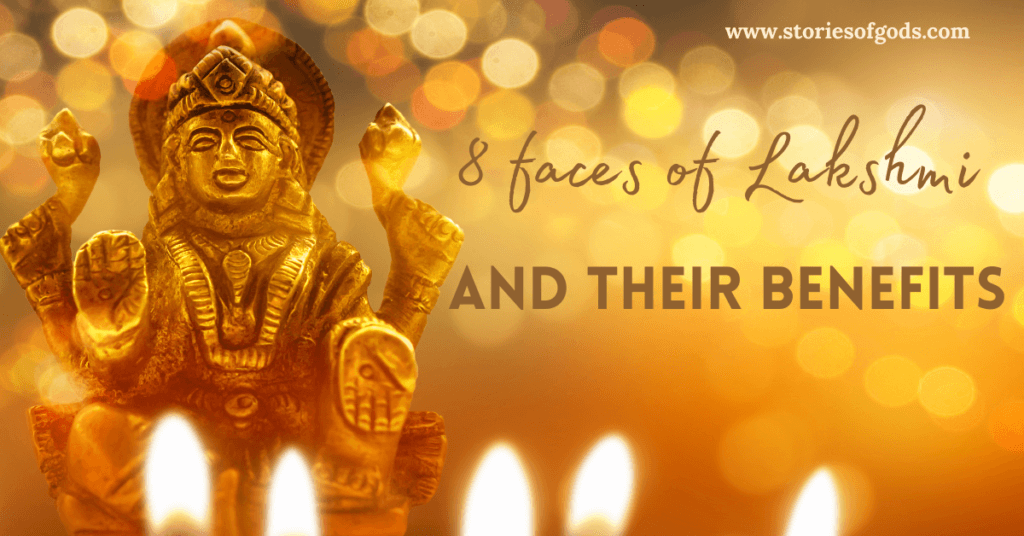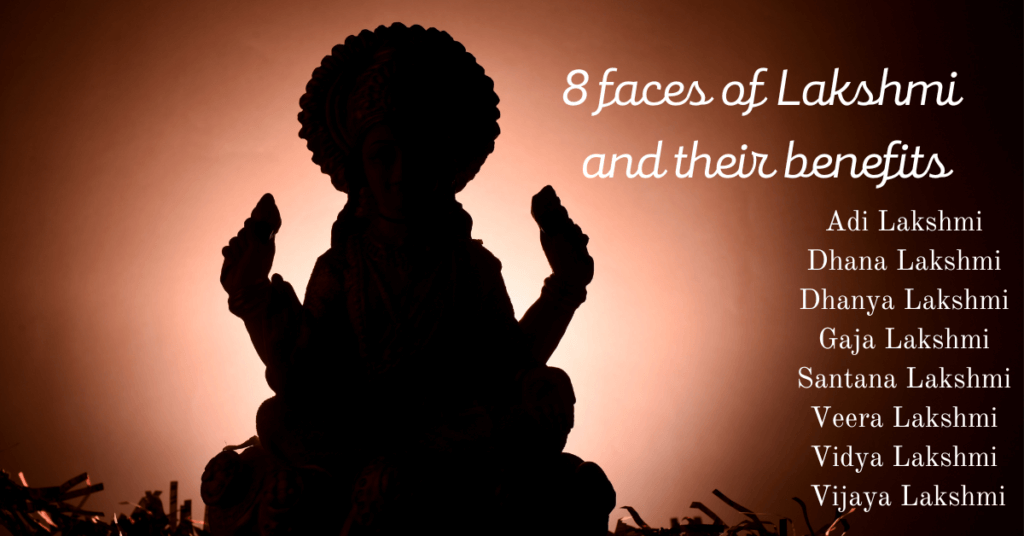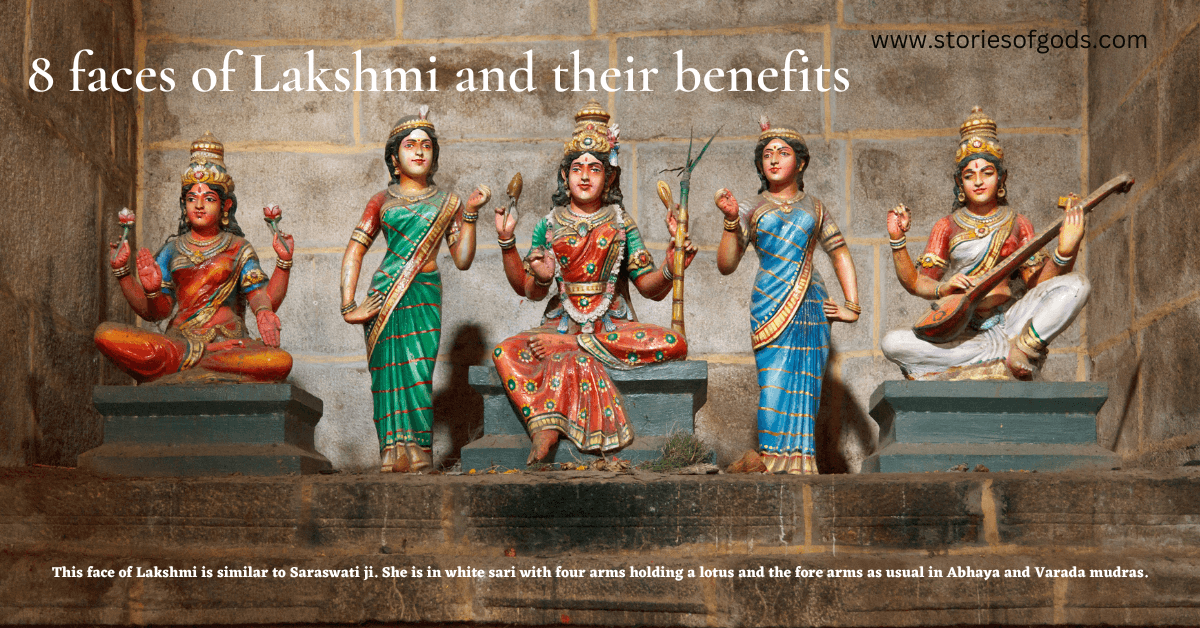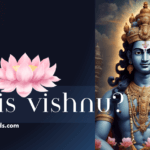8 faces of Lakshmi and their benefits Goddess Lakshmi is associated with wealth and she is wife of a famous Lord Vishnu who is worshipped for his many avatars. Lakshmi ji is also known as the daughter of Sea King called Kushila Samudra Raja.
Lakshmi ji is pictured sitting on a padmam or lotus. Most pictures show her smiling and her beauty is always depicted well in pictures or sculptures.
Hindus learned from their heritage that Lakshmi ji has eight different faces or forms, and each face of Lakshmi is assigned a name associated with a particular blessing she bestows on her devotees.

How many forms of Lakshmi are there?
The eight faces of Lakshmi ji collectively are called Ashta Lakshmi. Being said, Lakshmi ji has almost 1001 different names for her, such as Sridevi, Lamar, Padma, Pankaja, Madavi, Sundari, Saroja.
What are the 8 faces of Lakshmi?
Let us know more about these eight form or faces of Lakshmi ji in detail:-
Adi Lakshmi
Adi Lakshmi is the first form of Lakshmi ji. This face of Lakshmi is mostly in a pose sitting on a lotus flower with Chatur holding his buja.
You can see her four hands. She is depicted holding a lotus flower on one of her hind legs and a white flag on the other.
Right hand points to Abaya her mudra, representing blessings to the devotee. And Varada Hasta, left hand holds Varada Mudra. 8 faces of Lakshmi and their benefits
Dhana Lakshmi
`Dhana’ means wealth and Lakshmi means goddess. Dhana Lakshmi literally means the goddess of wealth. In India most festivals start with seeking blessing from Dhana Lakshmi as it brings wealth in whatever new you start.

Dhana Lakshmi is portrayed in a sitting or baithak position wearing a red coloured sari which is a traditional costume of Indian women. They wear this sari during auspicious occasions.
The photograph of Lakshmi ji depicts her six hands holding a conch (sankham) and a disc (chakram) in her arms, a bow (dhanush) and the sacred pot (kalasham) in one of her arms. The two fore arms in abhaya and varada mudra.
Lastly one can also see the gold coins pouring from the palm of the abhaya hasta in the abhaya mudra. This is the most crucial identity of Dhana Lakshmi.
Dhaanya Lakshmi
‘Dhaanya’ means ‘grain’ in hindi language. Indians regard grain as a very important part of their life as it represents food. Most part of Indian land is used for agriculture. Beside the metropolitan cities, if you travel to India, you will cross countless fields.
Goddess Lakshmi is considered to be the giver of food and nutrition to mankind. Worshiping Dhaanya Lakshmi blesses the devotee with food for the rest of their lives. Lakshmi is depicted in green coloured sari which symbolizes prosperity.
Goddess is seen with eight arms holding a sheaf of paddy, pink lotus, a sugarcane, a mace (gada), lotus and a bunch of bananas in her arms. Her two arms are in the abhaya and varada mudras.
Gaja Lakshmi
‘Gaja’ means elephant in native language. Gaja Lakshmi is depicted with two bedecked white elephants with (kalasham) in the trunks and performing abhishekam (pouring of water) to the Goddess. Most people believe that Gaja Lakshmi is the daughter of Ksheera Samudra Raja (the King of Oceans).
Incidentally, who helped Indra in getting back his lost wealth from the deepest oceans. Lakshmi ji is seen in pictures with four hands holding lotus and in Abhaya (right hand) and Varada (left hand) mudra. 8 faces of Lakshmi and their benefits
Santana Lakshmi
‘Santana’ typically means children or offspring in Sanskrit language. Lakshmi ji is considered as the Goddess of descendants and the life giver to children. As per Hindu culture, family and growth of family is given the most importance.
Descendants are crucial for taking the name, fame and growth of the caste, religion and family values forward. Lakshmi ji is depicted with six hands with two kalashams,a sword, a shield and hands in Abhaya and Varada mudras.
Another thing that you notice is the presence of a child in her lap.
Dhairya Lakshmi
‘Dhairya’ literally means courage in hindi. It is believed that if you worship Lakshmi ji with a clean heart and intention, she blesses you with courage, power and strength to fight with any situation in life.
Lakshmi ji is depicted with eight arms holding a sankham and chakram, a bow, an arrow, a sword and a book or a gold brick in the Abhaya and Varada mudras. 8 faces of Lakshmi and their benefits

Vidya Lakshmi
“Vidya’ means education or knowledge about everything in the Indian language. Lakshmi ji is believed to be the goddess who imparts knowledge. If you know about the Goddess Saraswati, you would know she is the goddess of knowledge.
This face of Lakshmi is similar to Saraswati ji. She is in white sari with four arms holding a lotus and the fore arms as usual in Abhaya and Varada mudras.
Vijaya Lakshmi
In olden times when a Maharaj went for a war, most of his older family members use to bless him by saying- “Viajaya Bhawa”. “Vijaya’ means victory in Sanskrit. Like the Maharaja times to our recent times, situations have changed but we are fighting with battles on a regular day.
Some battles are internal and some are externals. Lakshmi ji signifies victory of her devotees over our battles. Our internal battles can be easily explained with Human Revolution by Nichiren Daishonin Buddhism which talks about how our negative aspects make us lose battles in life.
Here the goddess is depicted with eight arms holding sankh ,chakra, a lotus, a shield, a sword, a noose and the fore most arms in Abhaya and Varada mudras. 8 faces of Lakshmi and their benefits
What does Goddess Lakshmi hold?
Lakshmi also Shakti, as the name sounds as per hindi language, means Power. The eight forms of Lakshmi, the Hindu goddess of abundance give different types of wealth like spirituality, monetary wealth, agriculture, royalty, wisdom, bravery, progeny, and victory.






